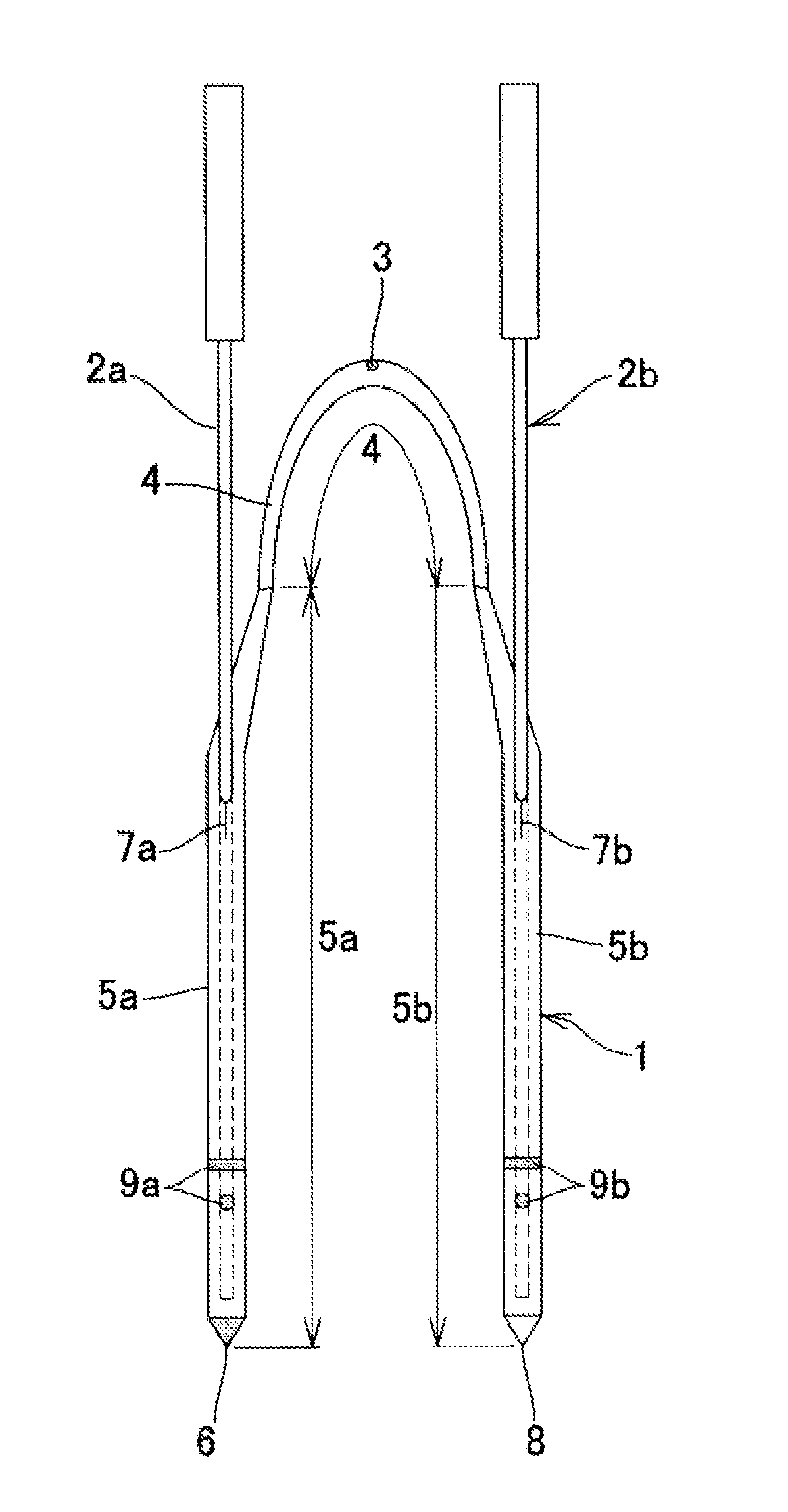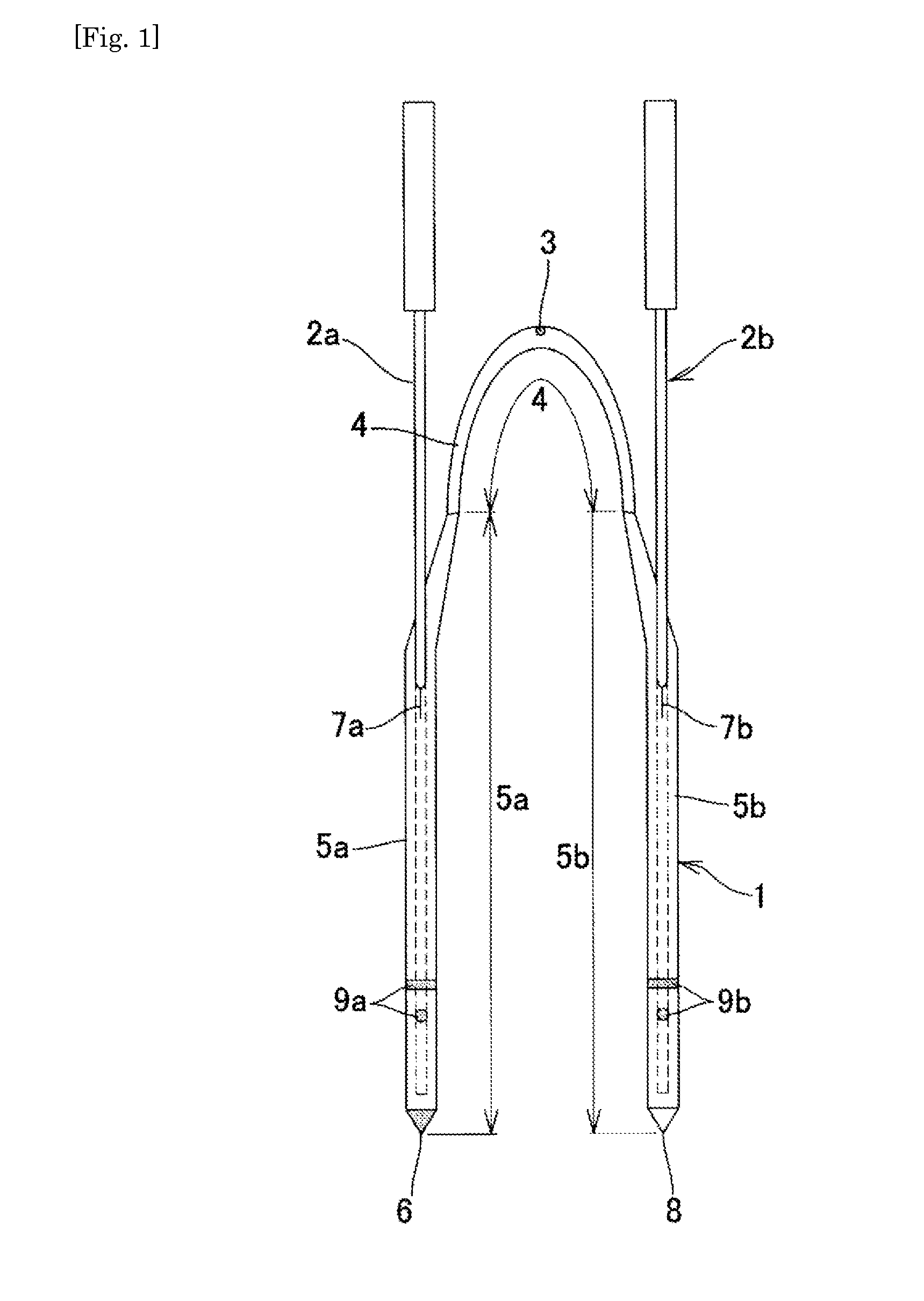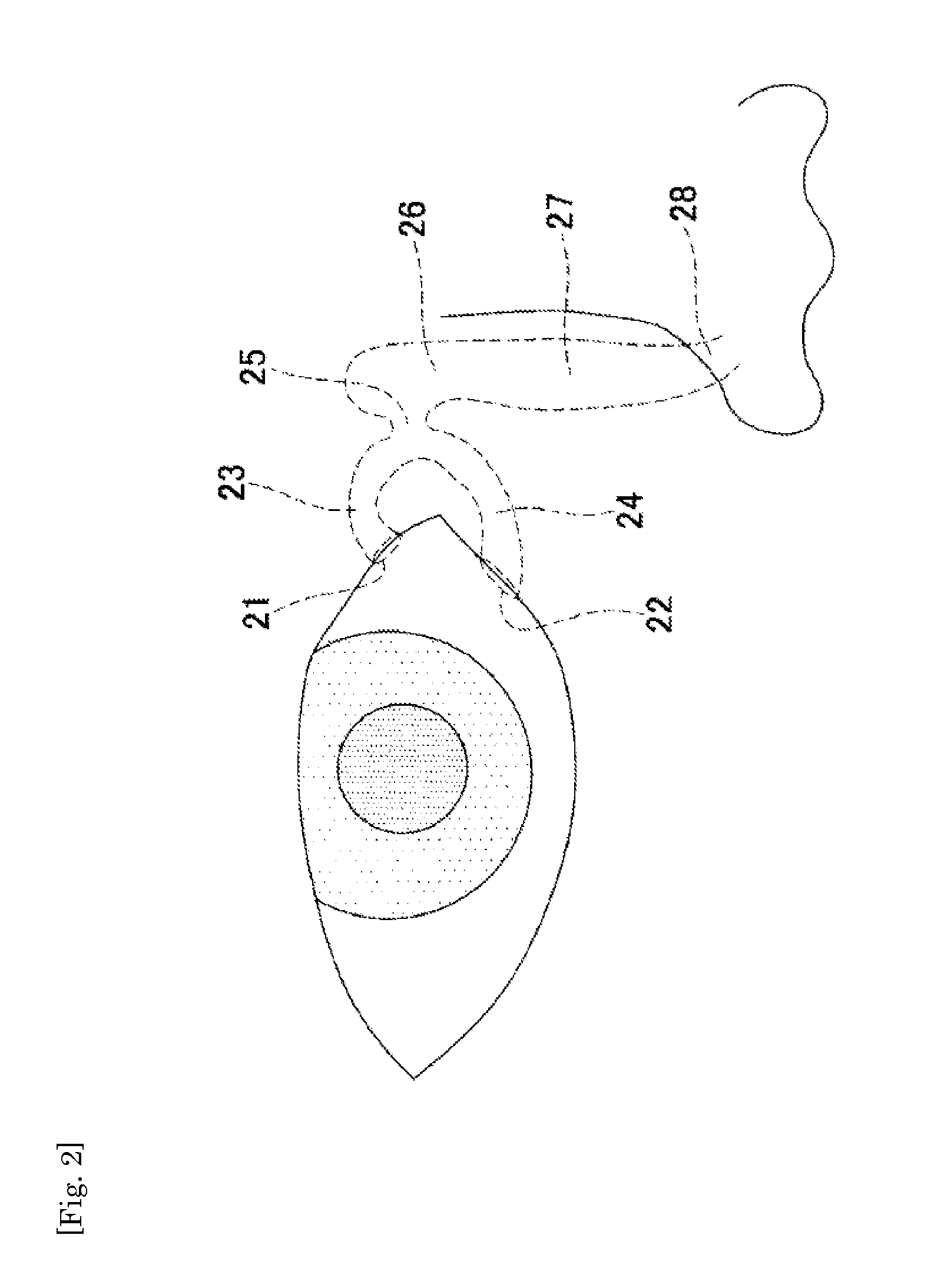Medical tube
a technology for medical devices and tubes, applied in the field of medical devices, can solve the problems of difficulty in correctly inserting the tube into the curved or obstructed lacrimal duct, the difference in treatment, and the cost of devices, so as to reduce the drop of the lubricant layer, improve the durability, and facilitate the insertion into the living body
- Summary
- Abstract
- Description
- Claims
- Application Information
AI Technical Summary
Benefits of technology
Problems solved by technology
Method used
Image
Examples
example 1
Production of Coating Liquids
(1) Preparation of Liquid A
[0145]The following substance was put into a 10 L reactor.
4,4′-diphenylmethane diisocyanate6.0[kg]
[0146]The substance was heated up to 70° C. while being stirred in a nitrogen stream. Then, the following substance was continuously dripped into the former substance over two hours while the former substance was further stirred.
Ricinus oil3.2[kg]
[0147]The substance was further continuously stirred at 70° C. in a nitrogen stream for two hours, thereby obtaining a polyurethane pre-polymer.
(2) Preparation of Liquid B
[0148]The liquid A was blended 4.8 g with 1.2 g of ricinus oil and 34 g of THF, and well stirred to obtain liquid B.
(3) Preparation of Liquid C
[0149]The liquid B was blended 5 g with 25 g of a solution with 10 weight % of THF in polyethylene glycol 4000 (PEG4000), and stirred at 40° C. for three hours, thereby obtaining liquid C. The concentration of components other than THF (coating composition) in the obtained liquid C...
example 2
Production of Coating Liquids
[0159]In the same manners as in (1) to (5) of example 1, liquid A, liquid B, liquid C (1), liquid C (1 / 4), liquid C (1 / 8), liquid D (1), liquid D (1 / 4), and liquid E (1 / 4) were prepared.
[0160]In addition, as in the same manner as in (3) of example 1, a portion of the liquid C (1) was blended with THF for 16-fold dilution to prepare liquid C (1 / 16) in which the concentration of the coating composition was 0.57 weight %, and the same operation was performed for 32-fold dilution to prepare liquid C (1 / 32) in which the concentration of the coating composition was 0.29 weight %.
[0161]As indicated in Table 4, the liquid C (1 / 32), liquid C (1 / 16), and liquid C (1 / 8) were used as intermediate layer coating liquids, and the liquid E (1 / 4) was used as a lubricant layer coating liquid to obtain a tube in which an intermediate layer and a lubricant layer were sequentially laminated on the surface of the tube, in the same manner as in example 1. The obtained tubes we...
example 3
Production of Coating Liquids
[0162]In the same manners as in (1) to (4) of example 1, liquid A, liquid B, liquid C (1), liquid C (1 / 2), liquid D (1), and liquid D (1 / 2) were prepared. The same amounts of the liquid C (1 / 2) and D (1 / 2) with the same dilution ratio of the coating composition were mixed together and stirred at 40° C. for one hour, thereby obtaining liquid H (1 / 2). Table 1 shows the composition ratio of the liquid H.
[0163]A tube with an outer diameter of 1.0 mm and a length of 200 mm produced by Pebax was used.
[0164]The tube was dipped in the liquid C (1 / 2) as an intermediate layer coating liquid, and was pulled out in parallel to the length of the tube at a constant speed of 10 mm / sec, thereby to coat the liquid C (1 / 2) to the surface of the tube. After that, the tube was dried for one hour at room temperature to form an intermediate layer on the surface of the tube.
[0165]The tube was dipped in the liquid H (1 / 2) as a lubricant layer coating liquid, and was pulled out ...
PUM
| Property | Measurement | Unit |
|---|---|---|
| weight % | aaaaa | aaaaa |
| weight % | aaaaa | aaaaa |
| weight % | aaaaa | aaaaa |
Abstract
Description
Claims
Application Information
 Login to View More
Login to View More - R&D
- Intellectual Property
- Life Sciences
- Materials
- Tech Scout
- Unparalleled Data Quality
- Higher Quality Content
- 60% Fewer Hallucinations
Browse by: Latest US Patents, China's latest patents, Technical Efficacy Thesaurus, Application Domain, Technology Topic, Popular Technical Reports.
© 2025 PatSnap. All rights reserved.Legal|Privacy policy|Modern Slavery Act Transparency Statement|Sitemap|About US| Contact US: help@patsnap.com



